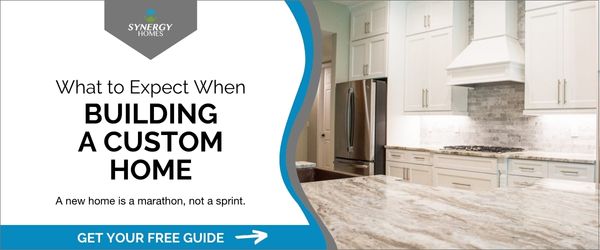Decided on a new build? There are some amazing benefits to the home-building process. After all, thousands of home buyers spend lots of time and energy searching for the perfect home only to come up empty-handed, then settle for something that only sort of meets their needs. Let’s look at the home construction timeline.
Building a new home means some real advantages. Perhaps the biggest one for many buyers is the fact that a new build means you get exactly what you want in a home. It also gives you the opportunity to take advantage of energy-efficient upgrades you just can’t make in an existing home.
Post-COVID, however, many are concerned about the longer timeframe for the home-building process. After all, building a home at any point in time is a unique experience that can take from three months to a year. Post-COVID, though, those numbers have clearly changed.
Your Home Builder’s Construction Timeline
If you’ve never worked with a builder before to create the home of your dreams – and most people only do it once – you may not even understand the steps you’ll encounter along the way, and better understanding the home construction timeline can help you better understand any slowdowns you might experience in today’s market.
Initially, you’ll work with your team to choose the right space for your home and begin to establish exactly what you want in a home. Nailing down the specifics like your desired square footage, the number of bedrooms you want, and any special features you want to include is an absolute must. Once you’ve designed your house and selected the space, your team will begin to work for you. In the first few weeks, they’ll begin preparing the lot, pouring the foundations and footings, and framing your home. Once the basic structure is complete, your team will begin filling it with the basics for your home. This includes laying the plumbing lines, installing the electrical system, and adding the heating and cooling units that will help your home stay comfortable throughout the year. Insulation and drywall will go in, and slowly, your new build will start to look more like a home. Over the next several weeks, flooring is installed, cabinets are hung, and the woodwork is installed. From there, fixtures and appliances are put in and landscaping services begin to take shape so your home looks amazing both inside and out. In the last few weeks of a build, all of the small things are addressed, loose ends are tied up, and you’re ready to close and move in.
A Post-COVID Home Construction Timeline
Now that you know how things are supposed to work, taking a look at that home construction timeline in practice in today’s market is a must. Believe it or not, homebuilders are actually slowing the production of new homes, even though the market is still relatively hot. The reason? There are actually three big problems.
- The prices for almost all of the materials that go into homes have increased dramatically.
- The ability to get those materials is harder than ever.
- The chance to connect with skilled personnel has decreased.
It’s a recipe many home builders are struggling with, and one that many potential new home buyers are facing as a new daily reality.
These three problems have resulted in a serious change to the home building process. Some builders have even started adding escalation clauses to sale prices to cope with the increase in prices, labor shortages, and materials delays. These clauses suggest that if the cost of building materials significantly increases, the customer is responsible for those increases. Other new contract clauses address potential changes in the timeline due to labor and materials shortages.
The impact of these problems is clear. While there are still plenty of buyers for new construction homes, the number of new construction homes themselves is declining. Most experts anticipate the number of homes built this year will decline by nearly 20%.
But what about those people who are already in line? What can they expect in terms of the building timeline? A much slower pace.
Builders are experiencing delays not just in finding the right team members or getting the materials they need, but even in the permitting and inspections process. Generally, everything is taking far longer. From obtaining the initial permits to waiting on appraisals, inspections, and even titling, the slowdowns are nothing short of eye-opening. In most cases, home buyers can expect an original timeline of four to six months to stretch to nine to twelve months. While the steps are the same, what isn’t the same is that builders just don’t have access to the manpower or materials they once did on the same time scale.
Fortunately, however, many builders are finding more ways than ever to be creative. While flexibility from everyone is key builders have found ways to help decrease supply chain disruptions thanks to smarter planning and design strategies, helping to reduce any fears that a customer’s newly built home will be able to stick to a solid home construction timeline. Contact us today if you are interested in building an energy-efficient home.

Comments are closed here.